I recently bought two 5m rolls of red and blue LEDs for building an hydroponic lettuce light. Each of them is supposed to have the following properties:
- 300 SMD 5050 LEDS
- 72 Watts
- 12 Volts
- 4500 Lumens
- Beam Angel 120°
See Amazon
Naturally the high lumens were the thing that made me buy these ones. But I had my doubts so I started measuring their power consumption first: Red: 92,5 W Blue: 71,6W So red is drawing way to much current - still no big problem as I am interested in light intensity.
Here is a schematic:

simulate this circuit – Schematic created using CircuitLab
Then I measured all the LEDs and resistors and found the following:
- Red: LEDs(2.1V), Resistor(2.8V),
- Blue: LEDs(3.06V), Resistor (1.3V)
That suprised me: As there are always 3 LEDs and 2 resistors in series, the resistors in the red strip account for about 46% of power consumption. The resistors in the blue strip for 22%. Is that normal? Or is it just bad engineering?
That seemed legit from datasheets of other vendors (they did not include any data sheet). Finally I measured the luminous emittance with a Voltcraft MT-52 (cheap multimeter...). I made a box where only one LED could fit and positioned the multimiter 10cm beneath it. I measured: - Red: 55 lux ~ 1.73 lm - Blue: 115 lux ~ 3.6 lm
If you multiply that by 300 LEDs per strip you get 520 lumens for red and 1086 lumens for blue - but they promised 4500lm for each one!
I know that my multimeter isn't exactly made for measuring this and probably has a quite big measuring error - especially for LEDs. But can the error be that big? And are there even 5050 LEDs that could give me 15 lm a piece?
Finally a pic of the LED strip (notice the weird circuit: LED--R--LED--R--LED)

